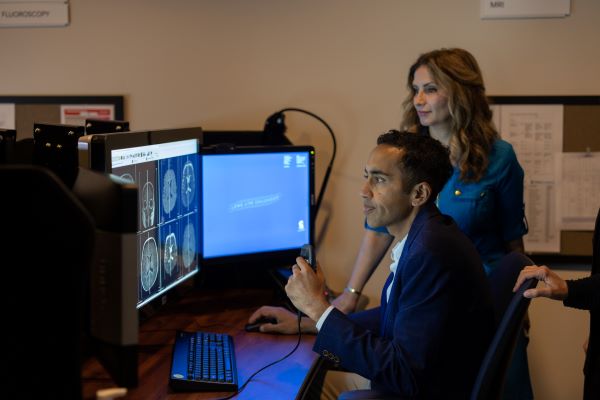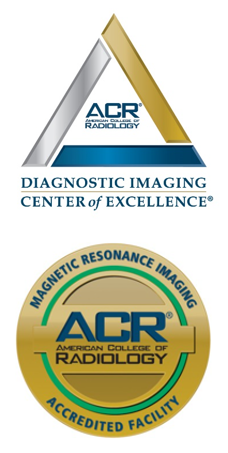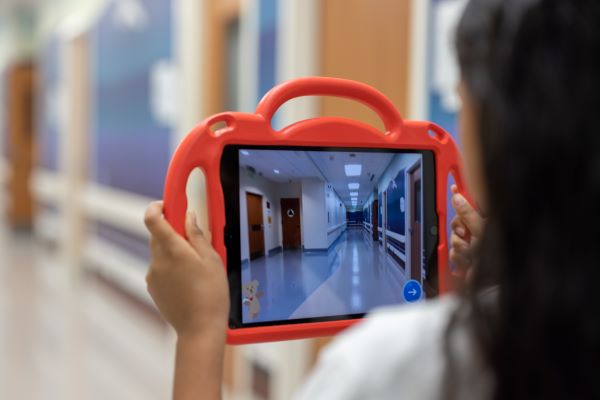Magnetic Resonance Imaging (MRI)
CHOC offers MRI scans in a kid-friendly place with special care, expert staff, and advanced technology. Our high-tech equipment takes detailed pictures of organs, bones, and tissues without using X-rays.

What is an MRI?
An MRI is a safe way for doctors to see inside your body without using X-rays or radiation. Instead, it uses strong magnets and radio waves to create detailed pictures of your organs, bones, and tissues.
Radiologists look at the MRI pictures to diagnose problems or check how your body is responding to treatment.
During the scan, radio waves move atoms in your body while a powerful antenna collects the signals and sends them to a computer. The computer then creates a clear black-and-white image of your body, helping doctors find any issues.
What types of MRI machines does CHOC use?
- Siemens 1.5T MRI: At CHOC we are proud to offer our patients the very latest in MRI technology. Our latest MRI technology reduces scan time by up to 50% to make it quicker for you.
- Siemens 3T MRI:We are one of the few places that have a 3T MRI for kids. Its’s faster and gives excellent pictures. With this machine, sometimes your head can be outside during the scan. However, it’s not always the best choice for all types of imaging.
The radiologist will decide which machine is right for your child.
When is an MRI needed?
An MRI can detect many conditions and provide clear images of body parts that X-rays, CT scans, or ultrasounds can’t show well. It’s useful for checking the brain, spine, joints, cartilage, ligaments, tendons and finding infections, inflammation, or tumors.
What MRI imaging and procedures are available at CHOC?
At CHOC, we offer some special MRI imaging and procedures that may not be available elsewhere:
Neuro Specialty Imaging
- Neuroblate Imaging– We can do MRI-guided laser ablation for tumors or areas causing seizures.
- Functional Imaging– measures activity in certain areas of the brain while the patient performs tasks.
- Prefusion Imaging– measures the blood perfusion of the tissues.
- DTI Imaging– helps to see nerve cell and fiber tracks. This can be used to plan for surgeries.
Other Specialty Imaging
- Cardiac Imaging – We can use MRI to get a detailed look at the heart and help with diagnosis or surgery decisions.
- Iron Quantification Abdomen Imaging – measures the amount of iron in the liver.
- Arthrogram Imaging– contrast is injected into the joint under Fluoroscopy. The patient then comes to MRI to get detailed imaging of the joint. This is mostly used to look for tears in the joint.
- Fetal Imaging– gives a detailed look at the fetus and all their structures.
Is an MRI dangerous?
No, MRIs are safe and easy. They don’t use radiation, and there are no known health risks from the magnetic field or radio waves. You can have multiple MRI scans without any side effects.
Due to the use of the strong magnet, an MRI cannot be performed on patients with:
- Implanted pacemakers
- Cochlear implants
- Certain prosthetic devices
- Implanted drug infusion pumps
- Neurostimulators
- Bone-growth stimulators
- Certain intrauterine contraceptive devices
- Any other type of iron-based metal implants
Please inform the radiology department if your child has any implants or devices. Your care team will discuss the guidelines with the patient and family before the study.
What is the preparation for an MRI?
- To help ensure the patient’s safety, please bring a list of the child’s current medications, allergies and information about any internal surgical implants to the MRI appointment.
- Children will be provided with a CHOC approved gown to change into.
- Patients can bring a favorite DVD to watch or CD to listen to (if not undergoing anesthesia).
- If anesthesia is needed, a CHOC nurse will call before the appointment to give you instructions about eating and what to expect
What if my child is scared?
While an MRI is non-invasive and painless, we understand that these machines can be frightening to your child. Our child life specialists help children of all ages feel comfortable and safe. We even have a toy-sized CT machine that can help teach them about the test beforehand. We even have a toy-sized MRI machine that can help teach them about the test beforehand. Learn more about our child life specialists and distraction techniques.
What to expect for the MRI?
- The MRI technologist will screen the child before entering the MRI suite. Because of the strong magnetic field, the patient must remove all jewelry and metal objects, such as hairpins or clips, hearing aids, eyeglasses and dental pieces. To get the highest quality images, the child must remain still during the scan.
- An MRI machine is a large, tube-shaped machine that creates a strong magnetic field around the patient. The patient will lie on a table that slides into a tunnel in the scanner. Meanwhile, the technologist will position the child and make sure they are as comfortable as possible.
- During the scanning process, a loud clicking noise will sound. The scanner will create a magnetic field and pulses of radio waves.
- Some children may need an intravenous contrast material for the scan. There may be some discomfort with the placement of the IV into the vein, but the contrast itself is not painful. The patient will receive contrast medication halfway through the procedure. A radiology nurse or technologist will call you one to two days before the procedure to explain this procedure.
- The technologist can see the child through a front facing window, as well as with a camera placed at the back end of the scanner. Our technologist will talk with the patient throughout the procedure.
- Most scans last 30-90 minutes.
Will my child need contrast?
Some children may need an intravenous contrast material for the scan. Your doctor will order it if needed. If contrast is needed, our team will give you instructions on how to prepare for your child’s test.
Radiologists use the IV or oral contrast to check the blood supply to an area. The IV contrast is very safe. Patients take the contrast medication halfway through the procedure. The child may feel a sensation like they have to urinate or a warm flushed sensation after the dye goes into the vein. This is a normal feeling and will go away quickly.
What happens after the MRI procedure?
Your child’s doctor will receive the report usually within 5-7 days. (Please contact the doctor who ordered the scan for the results.) Your child should be able to go back to their normal activities right away unless your doctor says otherwise.
If the patient received anesthesia, the child will rest in the recovery area until the medication wears off and they wake up. Your child may feel groggy or tired for several hours after the procedure.
If a patient received contrast, make sure they get extra fluids for the rest of the day. The contrast will pass naturally through your child’s body within a day.
Why Choose CHOC?

- CHOC has been designated a Diagnostic Imaging Center of Excellence® (DICOE) by the American College of Radiology (ACR) for best-quality imaging practices and diagnostic care.
- CHOC uses only board-certified pediatric radiologists and specially trained pediatric radiology technologists, nurses and child life specialists.
- All radiology staff undergo age-specific training annually to learn how to work and communicate with children of varying ages.
- We are only one of a few medical centers in the country to have child life specialists working in a dedicated pediatric radiology and imaging department.
Meet Our MRI Directors

Eghbal, Azam A. MD
Specialty:
Radiology
Appointments: 888-770-2462
Dr. Eghbal is a board certified pediatric radiologist who treats kids and teens at CHOC Hospital in Orange.

Chiang, Michael J. MD
Specialty:
Radiology
Office: 714-509-9060
Dr. Michael J. Chiang is board certified in pediatric radiology who treats kids and teens in Orange County.













